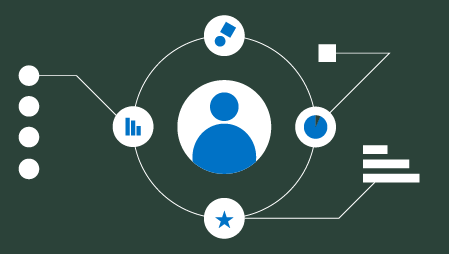Today, technology has become central to how every business competes. Futuristic advancements like artificial intelligence, big data and cloud computing are no longer pie-in-the-sky propositions, but mission critical initiatives that leaders are racing to implement within their organizations.
Unfortunately, most of these initiatives fail. In fact, McKinsey found that fewer than a third of organizational transformations succeed. That’s incredibly sobering. Imagine any other initiative with that type of expected return not only getting consistently funded, but enthusiastically viewed as a smart bet on the future.
Yet digital transformation doesn’t have to be a sucker’s bet. The truth is that digital transformation is human transformation and that’s where you need to start. Initiatives fail because organizations habitually get blinded by the “gee-whiz” aspects of technology, don’t focus on clear business objectives, scale too fast and then declare victory way too early.
1. Focus on People First, Technology Second
At first, digital transformation seems fairly straightforward. There are many capable vendors that can competently implement cloud technology, automation, artificial intelligence applications or whatever else you’re looking for. So, theoretically at least, a standard procurement process should be effective in sourcing and executing a project.
Yet consider how the the nature of work has changed has changed over the last few decades, due to technological shifts. We spend far less time quietly working away at our desks and far more interacting with others. Much of the value has shifted from cognitive skills to social skills and collaboration has increasingly become a competitive advantage. New technologies such as the cloud and AI will only strengthen and accelerate these trends.
The truth is that value never disappears it just shifts to another place. Consider the case of bank tellers. There are more than twice the number of bank tellers today than there were before ATM machines, but the work they do is vastly different. They are no longer there to execute transactions, but to advise, solve problems and up-sell. That takes very different skills.
So the first step towards a successful digital transformation is not the technology itself, but thinking about how you can empower your people through it. Where do you expect value to shift to? What new skills will your people need to learn in order to succeed? How can technology help them get where they need to be to serve your customers well?
2. Establish Clear Business Outcomes
Another common mistake executives make when implementing new technology is to focus on the capabilities of the technology itself, rather than the business outcome you hope to achieve. Are you trying to drive transactions, improve service and customer experience or something else entirely? You need to determine that before you can even think about a technical approach.
That’s why every transformational effort should involve operational managers, partners and front-line workers from the start. You need also to talk to customers and see what they actually value, rather than what would simply help operations to run smoother. From there, you can begin to develop a vision for how your business can function differently.
For example, when Barry Libenson first arrived at the data giant Experian as Global CIO in 2015, he spent his first few months talking to customers and the business units that served them. Everywhere he went, he found the same thing: what customers valued most was access to real-time data, which his company’s existing infrastructure could not provide.
From there, the path forward was fairly simple, but not easy. He needed to shift his company from a traditional on-site server architecture to the cloud. That took him three years to accomplish, but it transformed Experian’s business, empowered new business models and led to new revenue streams.
3. Identify A Keystone Change
Once the vision is in place, the tendency, all too often, is to embark on what becomes a “five-year death march” to achieve it. In the end, everybody ends up frustrated, angry and, inevitably, it turns out that by the time the vision is achieved, the technology is out of date.
So instead of trying to swallow the entire vision whole, it’s best to start out with a keystone change. Think about a clear and tangible goal you can achieve in the near term that would require the involvement of multiple stakeholders and pave the way for future, more complex initiatives in the future.
One way to do this is to choose a solution that will help people with tedious, mundane tasks rather than create a new capability. It’s much easier to get people excited by reducing the time and effort they have to expend on something they hate then it is to push them to adopt something new. You always want to attract and empower, rather than bribe or coerce.
For example, in Experian’s case, Libenson started out by creating internal API’s rather than building customer facing features. These didn’t create an enormous impact, but they showed what was possible and built momentum for the larger vision.
4. Treat Transformation As A Journey, Not A Destination
Perhaps the most dangerous part of any transformation is when the initial objectives have been achieved. That’s when motivation begins to weaken and complacency sets in. In my book, Cascades, I call this problem surviving victory and it is a crucial element of every transformational effort.
The key to surviving victory is to plan for it from the start. In Experian’s case, the journey was never about the cloud. That was merely a destination. The vision was always to serve customers better and to develop new business models. That’s why Libenson focused not only on implementing technology, but indoctrinating new values and beliefs.
“Having gone through this transformational process over the past three years and seeing concrete business results, we are much better positioned to adopt those technologies,” he told me. “We’ve made the changes in culture, our organizational structure and skills to be able to adopt new technologies quickly, completely and with better collaboration with our customers.”
That emphasis on values is key, because to change fundamental behaviors you first have to change fundamental beliefs and digital transformation is always about empowering action. Keep your eye on that and you will be likely to succeed where most others fail.



